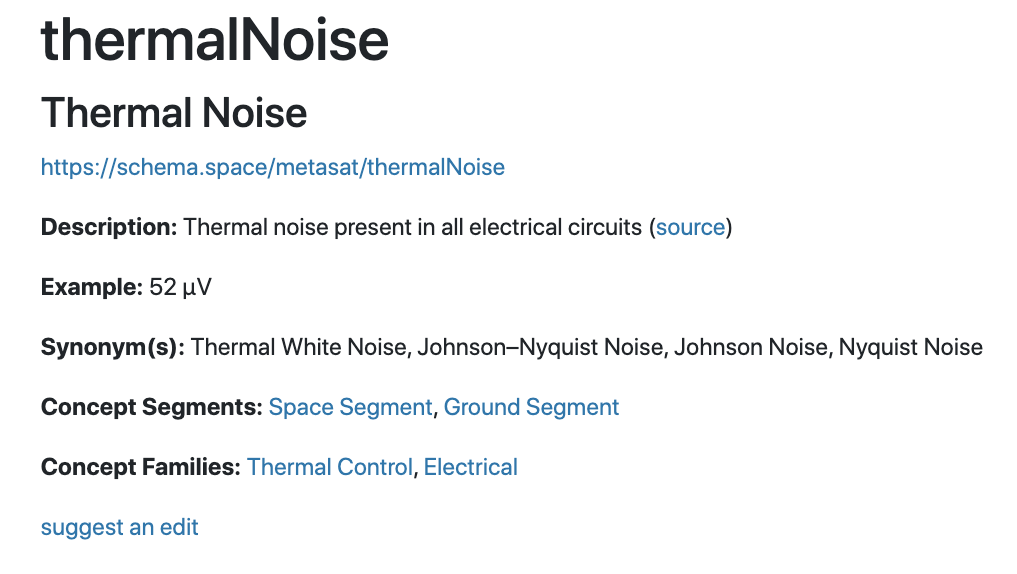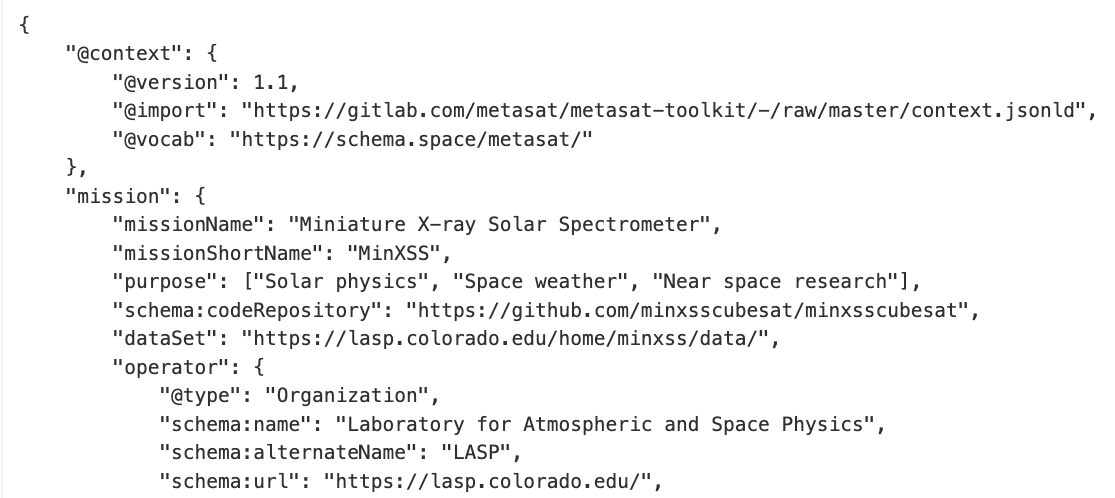MetaSat
Metadata for the Future of
Space Exploration

Daina Bouquin
Harvard-Smithsonian Center for Astrophysics
daina.bouquin@cfa.harvard.edu
MetaSat
Metadata for the Future of
Space Exploration




September 7, 1999
This is the only image acquired by the Orbiter.
What does this image mean?
Who would I ask?
Will it ever mean something else?

NASA/JPL/MSSS

NASA/JPL/MSSS
This image doesn't mean anything on its own.
We need context.
We need to know the story about the MCO Mission.
We need to know where this image came from.
People need to be able to learn from it.
Metadata
Mechanisms for modeling relationships between the information gathered from contextual sources.
Human readable
metadata has limited functionality.
Words mean different things to different people.
Search engines rely on machine-actionable metadata.


Why does this page come up first?
Why does this search return a knowledge panel?
space.com has great metadata.

Wikipedia does too.
https://en.wikipedia.org/wiki/Satellite


https://www.wikidata.org/wiki/Q26540
We need open, machine-actionable metadata to define and connect
all parts of a mission:
Hardware
Software
Data
People
This gives people the context and functionality they
need to learn from past missions.

Making space mission metadata more useful
MetaSat has three primary components:
-
MetaSat Vocabulary = Lexicon
-
JSON-LD Example schemas = Semantics
-
MetaSat Crosswalks = Translations
Our initial scope is SmallSats:
minimal resources means reliance on
past knowledge is even more essential
MetaSat Vocabulary
-
Unique concepts that describe spacecraft, missions operations, ground stations, and more.
- Concepts can be used for:
- Search Engine Optimization (SEO)
- Federated search across platforms via APIs
- Linked data applications
- Each concept also has a definition, which can be a starting place for people who are unfamiliar the field.

MetaSat Example Files (JSON-LD)
-
Example implementations of the MetaSat vocabulary.
-
Our examples are written in JSON-LD
-
JSON-LD is human-writable and machine-actionable
-
JSON-LD allows MetaSat to interoperate with other vocabularies using @context
-

These snippets include high-level descriptions of an attitude control system using both MetaSat and schema.org


We can identify software and data too.


You can also contextualize papers or bibliographies
(preprint about the spacecraft)
MetaSat Crosswalks
-
A crosswalk is a table of equivalencies for converting metadata from one vocabulary into another.
-
Crosswalks + JSON-LD will allow MetaSat users to combine different vocabularies into a single document, or convert documents into other syntaxes without losing information.

